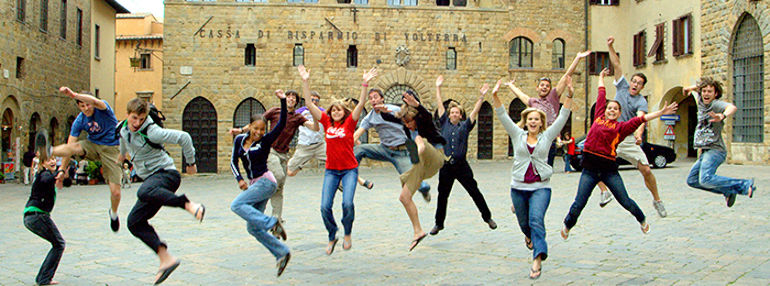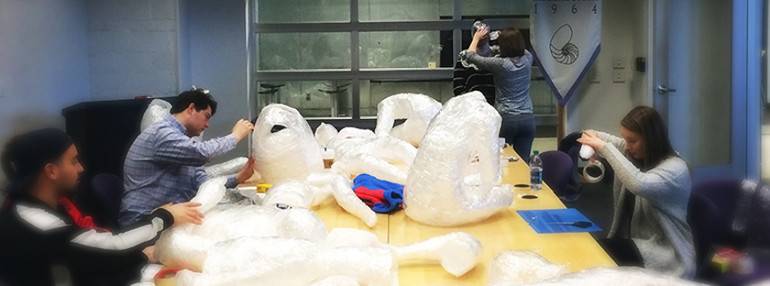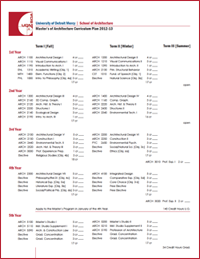Architecture - Bachelors or 5-Year Master's

The architecture program is the central degree program in the School of Architecture & Community Development (SACD). Two degrees are offered: a five year Master's of Architecture, which is a professional degree fully accredited by the National Architectural Accrediting Board (NAAB), and a four year Bachelor of Science in Architecture.
The Master's program is actually a continuation of the undergraduate program, so the curriculum is the same in both programs for the first four years, and traditional high school students are admitted directly into the architecture program. Detroit Mercy is one of only four accredited schools of architecture & community development in the state of Michigan, and the only one at a Jesuit or Mercy institution in all of North America.
The School also admits transfer students at various levels of the program when space is available. Transfer students' records are evaluated on a case-by-case basis and custom curriculum plans are developed for each individual transfer student. For more information for transfer students.
A dynamic education
At Detroit Mercy, learning doesn't just happen in a classroom through textbooks and lectures. We believe that a range of other settings enhances the classroom. Four key themes organize a dynamic educational experience that is the core of our curriculum:
Practice Ready Graduates
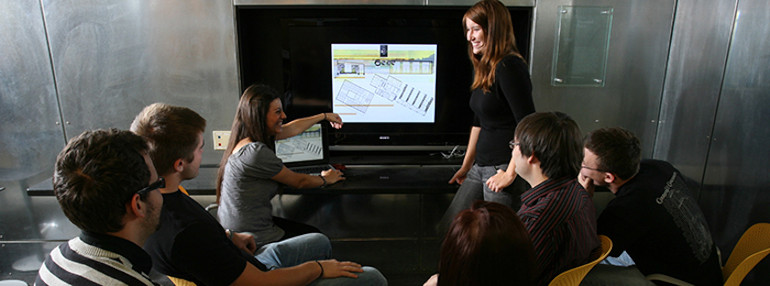
You will also have your skills in the real world through our unique two-semester paid internship program - a curriculum requirement for all students.
Community Engagement
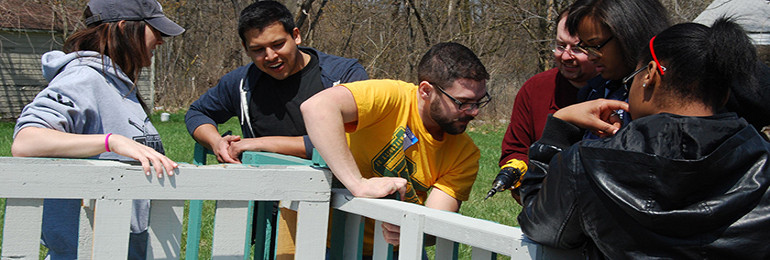
You won’t just create fictional projects, but you will collaborate with real clients on projects in Detroit through our award winning community engagement programs.
-
Curriculum

The five-year curriculum in Architecture is centered around the following areas:
- Design
- Visual Communications
- Structures and Technology
- History Theory
- Professional Practice
- University Core Curriculum
- Cooperative Education
Learn more about University's Course Catalog
Design is at the center of the curriculum spanning all five years of study. The Design Studios are organized into three parts: Foundation Studios (first year and second year), Upper Level Studios (third year and fourth year) and the Master's Studios (fifth year). Foundation Studios meets three afternoons a week for a total of 12 hours/ week and concentrates on developing basic technical, analytic, representational, and critical thinking skills necessary to deal with the complex social, psychological and poetic issues of the built environment. The studios are project based and the development of each student's personal and individual philosophy of design is one of the School's primary aims. Upper Level Studios meets three times/week for a total of 14 hours/week and is comprised of a mix of students from both third and fourth years together in investigations of complex architectural themes in more concentrated depth. Recently, Upper Level Studios has included community design, design of health care facilities, design-build experiences, architectural competitions, historical preservation, sustainability, furniture making and landscape design.Learn more about SACD's Studio Culture and Honor Code policy.
Visual Communications includes courses in multi-media drawing, computer graphics, computer aided design, three dimensional design and electives that explore various media. The ability to represent and model architectural ideas is fundamental to the design process.
Structures and Technology provides the technological background necessary to address the increasingly complex architectural themes of the studios. Included in this sequence are math, structures, energy and ecological design, and environmental technology (heating, ventilating, air conditioning, electrical systems, acoustics, etc.) courses.
History and Theory introduces the student to architectural tradition and precedent. It provides an understanding of the social, political, economic and philosophical forces that shape architecture. Through this foundation, students recognize their place in the architectural world and build their own work upon an understanding of the work of others.
Professional Practice introduces upper level students to fundamentals of managing an architectural office, project delivery systems, construction contracts, construction documents and legal and ethical issues concerning the profession. These courses, in concert with the cooperative training program, prepare students to enter the professional world.
-
An NAAB Accredited Degree Program
The Architecture master’s program offers a National Architectural Accrediting Board-accredited professional degree. Read more on NAAB accreditation.
-
Accreditation and Career Development
NAAB Accreditation for Prospective Students
NAAB Accreditation Criteria Conditions
ARE Pass Rates by School (NCARB)
Detroit Mercy SACD Annual Reports, Program Reports and NAAB Responses
Career Information and General Information from related professional and educational organizations
-
Our Approach to Admissions
SACD has a vision of where Variety is celebrated over singularity. Like a mosaic, where each ceramic or glass tile can have individual color, shape and identity, while still creating a bigger picture, we thrive when each of our students, staff, and faculty retain their identity while still being a part of a larger community. Each person at SACD is a unique and cherished individual and a valued member of our diverse community. Our differences bring richness and depth.
With this in mind, we understand…- …everyone’s educational backgrounds are different from one another. Therefore, though we have a stated 3.0 GPA requirement to be admitted into SACD, the dean and/or the associate dean meets with any student who is below this threshold to provide additional forms of assessment.
- Following admission into SACD, we provide mentoring and educational support tailored to the individual student to ensure the student will succeed and graduate. Currently, SACD has an 87.5% attrition rate between first and second year of the architecture curriculum.
- …a single standardized test (i.e., SAT, ACT, and GRE) is insufficient to evaluate a student’s ability and passion to study and succeed in our discipline of architecture. Therefore, we have abolished the use of test scores as a method to determine admission. Instead, SACD uses the method of GPA in combination with an interview as described in the previous point.
- …a high school student’s potential and drive may not be defined by whether or not they possess a portfolio or have had access to art classes or creative technologies in their high-school experience. Therefore, SACD does not require a portfolio or skills test for admission.
- Following admission, students are mentored on the value and methods of creating a dynamic portfolio. Similarly, all graphic and artistic skills necessary to be successful in the program are incorporated into our foundation curriculum.
This personalized process of admission is possible due to our commitment to remain a small and distinctive community.
- …everyone’s educational backgrounds are different from one another. Therefore, though we have a stated 3.0 GPA requirement to be admitted into SACD, the dean and/or the associate dean meets with any student who is below this threshold to provide additional forms of assessment.
